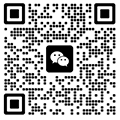

Chinese idioms, known as chengyu (成语), are more than linguistic shortcuts—they are capsules of history, philosophy, and cultural identity. Comprising just four characters in most cases, these expressions distill complex stories, moral lessons, and timeless truths into concise, poetic phrases. For millennia, chengyu have shaped Chinese thought, literature, and daily communication, serving as a bridge between ancient wisdom and modern life.
Most chengyu originate from classical texts, myths, or historical events. For example:
画蛇添足 (Huà shé tiān zú / "Draw a snake and add feet") comes from a Warring States Period fable about overcomplicating tasks.
塞翁失马 (Sài wēng shī mǎ / "The old man lost his horse") reflects Daoist philosophy, illustrating how misfortune can hide blessings.
These idioms often preserve archaic grammar and vocabulary, offering linguistic snapshots of China’s past. Scholars estimate that over 5,000 chengyu remain in use today, many dating back to the Four Books and Five Classics of Confucianism or the poetic verses of the Tang Dynasty.
Chengyu typically follow a four-character structure, a rhythm deeply rooted in classical Chinese aesthetics. This brevity demands mastery of context and tone. For instance:
亡羊补牢 (Wáng yáng bǔ láo / "Mend the pen after losing sheep") emphasizes fixing mistakes before further loss.
对牛弹琴 (Duì niú tán qín / "Play the lute to a cow") humorously critiques futile efforts.
Each character is deliberate, often employing parallelism, metaphor, or rhyme. The structure mirrors traditional Chinese poetry, blending form and meaning into a mnemonic device that’s both practical and artistic.
Chengyu encode the moral and philosophical bedrock of Chinese civilization. Confucian ideals like filial piety appear in 卧冰求鲤 (Wò bīng qiú lǐ / "Lie on ice to catch carp"), which praises a son’s devotion to his ailing mother. Daoist acceptance of nature’s flow is captured in 顺其自然 (Shùn qí zìrán / "Follow the natural order").
Many idioms also reflect historical social norms. 门当户对 (Mén dāng hù duì / "Matching doors and households") underscores the importance of social status in marriage, while 同甘共苦 (Tóng gān gòng kǔ / "Share sweetness and bitterness") celebrates collective resilience.
Despite their ancient roots, chengyu thrive in contemporary China. They are:
Educational cornerstones: Students memorize hundreds of chengyu for exams, dissecting their historical context.
Political rhetoric tools: Leaders use idioms like 实事求是 (Shí shì qiú shì / "Seek truth from facts") to frame policies.
Pop culture stars: TV shows and social media repurpose chengyu for humor or satire. A viral meme might twist 人山人海 (Rén shān rén hǎi / "People mountain, people sea") to complain about holiday crowds.
Globalization has also sparked creative adaptations. The idiom 马马虎虎 (Mǎ mǎ hǔ hǔ / "Horse horse tiger tiger"), meaning "so-so," inspired a popular clothing brand blending East-West aesthetics.
While chengyu remain vital, their usage is evolving. Younger generations often prioritize convenience over tradition, leading to debates about "cultural erosion." Yet, innovators are finding new ways to keep idioms alive:
Animated shorts explain chengyu through cartoons.
Language apps gamify idiom learning.
Writers blend classical chengyu with modern slang, creating hybrid expressions like 躺平主义 (Tǎng píng zhǔyì / "Lie-flatism"), a recent term critiquing societal pressures.
To understand chengyu is to grasp the Chinese worldview—one that values harmony, learns from the past, and finds profundity in simplicity. These four-character treasures remind us that language is not just a tool for communication, but a living museum of human experience.
As China navigates the complexities of the 21st century, chengyu endure as both cultural anchors and flexible vessels for new meanings. They teach us that wisdom, no matter how ancient, never truly grows old.
Add:NO.151 Xidazhi Street,Nangang Strict,Harbin,Heilongjiang P.R. China,150001
BINCIA CHINESE COLLEGE

